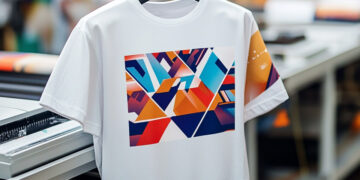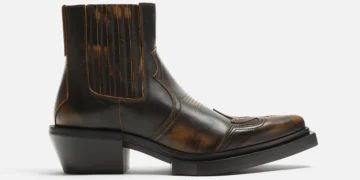
Fashion is evolving rapidly, fueled by trends, technology, and shifting consumer expectations. In recent years, the shift from traditional production methods to more agile and sustainable approaches has gained momentum. One of the most significant advancements transforming the fashion industry is print-on-demand (POD) technology. It is a game-changer for designers, entrepreneurs, and customers, allowing for a new way of producing and consuming fashion.
At the heart of this transformation is a commitment to reducing waste, increasing customization, and offering more accessible opportunities for small businesses and creators.
Fashion Customization: A New Trend
The greatest strength of print-on-demand technology is its ability to provide mass customization. As the world moves towards a more individualistic product approach, print-on-demand is in the middle of the action. Customers are no longer limited to getting mass-produced products, they can order products made to their specifications.
Print-on-demand allows customers to select designs, styles, and even the fabrics they want for their clothes. From t-shirts to hoodies and accessories, POD services enable consumers to create something unique to them. This is a shift towards individualism, a trend evident in society, where people are moving away from mass-produced goods to those they can identify with.
This customization capability also excites designers, allowing them to experiment with patterns and colors without committing to large-scale production. Designers can respond swiftly to emerging trends or customer requests, offering a level of flexibility previously unattainable in conventional manufacturing.

Sustainability and Reducing Waste in Fashion
Print-on-demand has other benefits, but one of the most important is the environmental impact. The fashion industry has been pointed out for being environmentally reckless, especially with the fast fashion model, which sees many clothes produced at cheap prices and then dumped. Print-on-demand is a better solution since products are only printed when there is an order. This helps to keep excessive stock and cut down on wastage because some products may not be sold.
Traditional mass production results in overproduction of unwanted goods, leading to significant waste and environmental damage, as fabrics contribute substantially to landfill waste. In contrast, print-on-demand ensures that all produced items are sold, effectively reducing overproduction and holding great potential for lessening the fashion industry’s negative environmental impact.
Additionally, most print-on-demand firms are going green by using sustainable materials and practices. Biodegradable inks, organically grown textiles for garments, and energy-sensitive printing techniques are the norm in POD services. Consumers remain more conscious of the environment, hence the increase in the need for sustainable fashion solutions, where print on demand for small entrepreneurs is beneficial to eco-conscious customers and brands.
Opportunities for Small Entrepreneurs
To small entrepreneurs, print-on-demand is a low-risk way of entering the fashion business. Conventional manufacturing requires significant capital investment in materials, inventory, and distribution, which can be challenging for small businesses or independent designers looking to break into the market. Print-on-demand addresses these obstacles by allowing entrepreneurs to launch their brands with minimal financial investment.
With POD, small businesses can offer a range of products without the need for inventory storage. This is particularly advantageous for start-up independent designers, as it minimizes potential investment losses. It allows entrepreneurs to focus on building their brand identity and developing their design concepts while the POD service handles production and shipping logistics. This model offers greater flexibility, enabling designers to create unique items instead of being tied to producing large quantities of the same product, which is typical of high-production models.

A Future Driven by Technology and Innovation
The application of technology in fashion is continually evolving, suggesting that the future of print-on-demand will be even more significant than it is today. Digital printing has advanced over the years, becoming easier, faster, and more cost-effective for producing stylish, unique, and high-quality apparel. In the future, we can expect more extensive design customization tools, allowing customers to create intricate and one-of-a-kind pieces.
Innovations like virtual fitting rooms, augmented reality, and 3D printing are set to elevate the fashion industry’s production and consumption methods. Imagine being able to touch a garment before purchasing or creating accessories with a 3D printer at home. These advancements, combined with the benefits of print-on-demand technology, will drive the future of fashion.
This shift represents a transformation in the fashion industry at both the production and consumption levels. Print-on-demand is changing the industry in ways that benefit consumers and producers alike, emphasizing customization, sustainability, and accessibility. As technology progresses, print-on-demand has the potential to bring even more changes to the fashion world. With its unique and eco-friendly approach, print-on-demand is poised to become a key trend in the future of fashion.



















